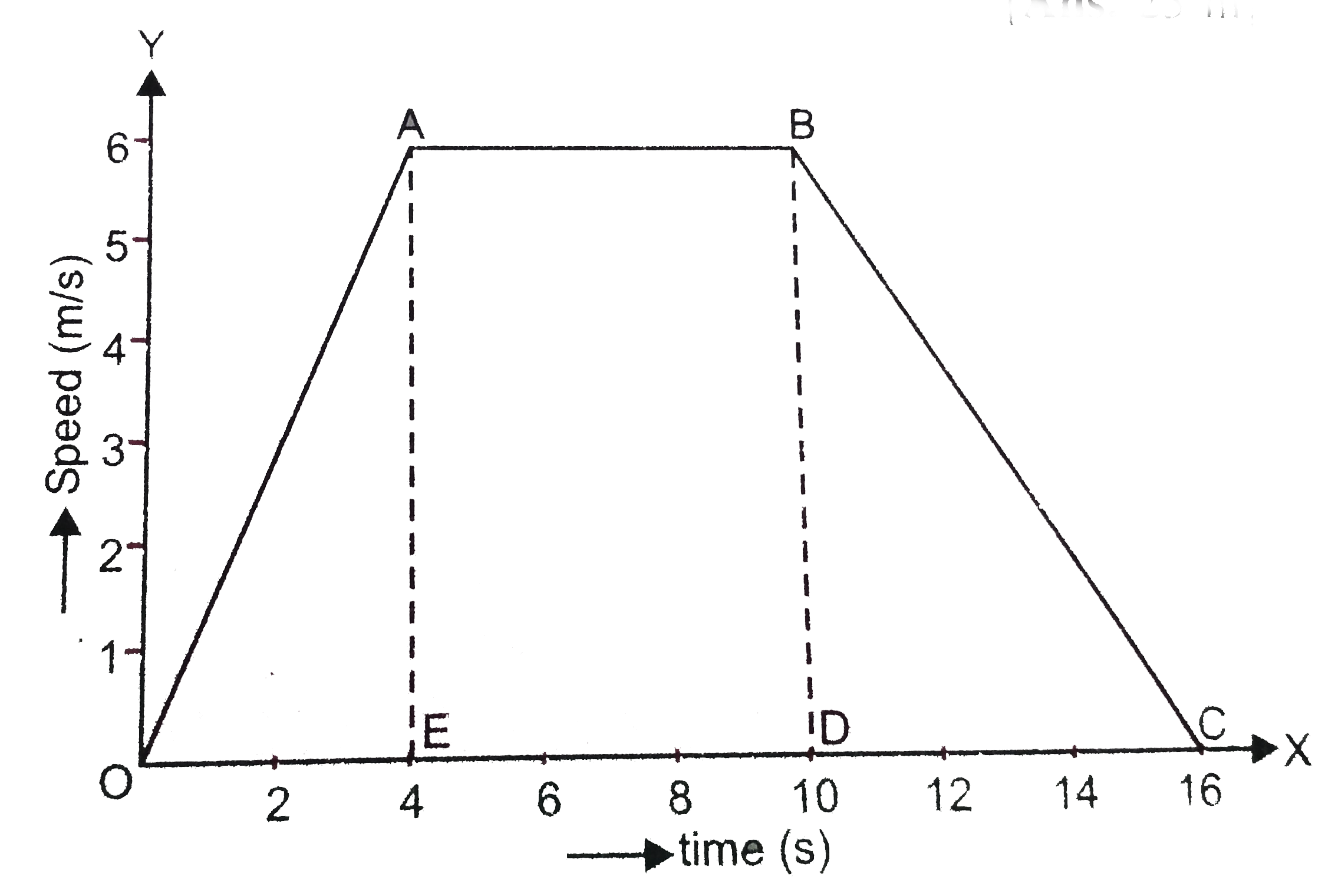Study the speed time graph of a body shown in Figure. and answer the following questions:
(a) What type of motion is represented by OA ?
(b) What type of motion is represented by AB ?
( c ) What type of motion is represented by BC ?
(d) Find out acceleration of the body.
(e) Find out retardation of the body .
(f) Find out the distance travelled by the body from A to B

The correct Answer is:(a)uniformlyae≤rated,(b)uniformvelocity,(c)uniformlyrηrded,(d)1.5 m//s^(2),(e)36 m
(a) As speed - time graph OA is a straight line with a positive slope , the motion is uniformly accelerated motion.
(b) As AB is parallel to time axis , its slope is zero . Therefore , acceleration of the body is zero . The body is moving with a uniform velocity.
( c ) As speed - time graph BC is a straight line with negative slope, the motion is uniformly decelerated motion ,
(d) From O to A ,
change in speed =6−0=6m/s
time taken =4−0=4s
Thus , acceleration =change in speedtime taken=6m/s4s=1.5m/s2
(e) From B to C
change in speed =0−6=−6m/s
time taken =16−10=6s
Thus , acceleration =change in speedtime taken=−6m/s6s=−1m/s2
Negative sign indicates retardation.
(f) From A to B , the velocity is uniform.
∴ distance travelled =velocity×time=6×(10−4)=36m
Topper's Solved these Questions
- BOOK - PRADEEPCHAPTER - MOTIONEXERCISE - Oral testing19videos
MOTION
- BOOK - PRADEEPCHAPTER - MOTIONEXERCISE - Quiz testing12videos
MOTION
- BOOK - PRADEEPCHAPTER - MOTIONEXERCISE - value based question4videos
MOTION
- BOOK - PRADEEPCHAPTER - GRAVITATIONEXERCISE - Model Test paper (1)36videos
GRAVITATION
- BOOK - PRADEEPCHAPTER - SOUNDEXERCISE - Model Test (sec - B)12videos
SOUND
Similar Questions
Study the speed-time graph of a car given alongside and answer the following questions :

(i) What type of motion is represented by OA ?
(ii) What type of motion is represented by AB ?
(iii) What type of motion is represented by BC ?
(iv) What is the acceleration of car from O to A ?
(v) What is the acceleration of car from A to B ?
(vi) What is the retardation of car from B to C ?View SolutionWhat type of motion is represented by each one of the following graphs ?
 View Solution
View SolutionWhat type of motion is represented by the following ?
Soldiers in a march past.View SolutionWhat type of reaction is represented by the digestion of food in our body?
View SolutionWhat type of reaction is represented by the digestion of food in our body?
View SolutionWhat type of motion is represented by the following ?
Pedals of a moving bicycle.View SolutionWhat type of motion is represented by the following ?
Hands of an athlete in a race.View SolutionWhat type of motion is represented by the following ?
Spinning of earth on its axis.View SolutionObserve the figure and answer the following questions:
(a) What does A,B,C,D and E represent in the given figure?
(b) What type of embryo is shown in figure ?
(c ) What is the function of A and B ?
 View Solution
View SolutionThe speed time graph of a body is as shown in Figure. Calculate
(i) acceleration of body, (ii) retardation of body, (iii) total distance travelled by the body.View Solution

